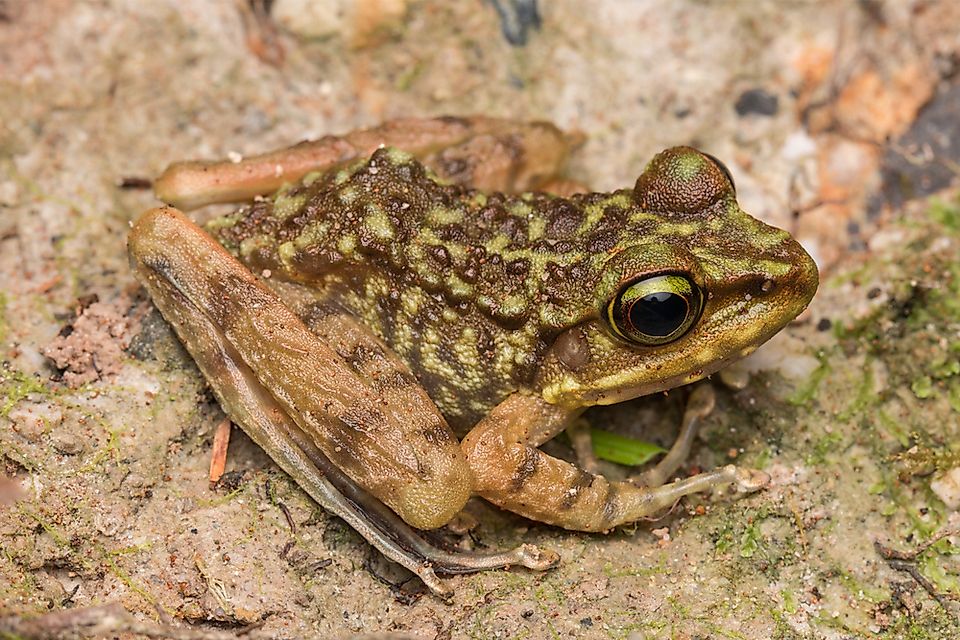What Are Dancing Frogs?

What Are Dancing Frogs?
The dancing frog, also known as the torrent or tropical frog, is a unique frog genus that belongs to the amphibian class. Scientifically, the genus is known as micrixalus, and in 2014 researchers discovered 14 new species. With this discovery, the number of identified dancing frog species has reached 24. The name “dancing frog” refers to the behavior of males during mating season. In order to attract the attention of females, males extend their hind legs and move them back in a rapid, eye-catching motion. This behavior is repeated in a pattern that many observers compare to dancing. In addition to attracting females, this dancing motion is also believed to deter potential male competitors. The dancing movement also has a direct correlation to the size of the frog, meaning the larger the frog, the more actively they dance. In 2016, researchers reported that they had finally observed dancing frog tadpoles. The term tadpole refers to the juvenile stage of the frog life cycle. The tadpole burrows into riverbeds once it hatches, making it difficult to spot. Underground, these juveniles effectively filter silt and mud in search of organic matter as a food source. This species is one of only a few frogs to take part in burrowing behavior.
Where Do Dancing Frogs Live?
Dancing frog species are endemic to the Western Ghat mountain range along the western coast of India. This ecosystem, which is covered in rainforest habitat, is recognized as one of the world's biodiversity hotspots. Within these mountains, the dancing frog can be found living in humid areas with moist soil, swamps, or near waterways such as streams and rivers. Here, the life cycle of dancing frogs relies on the climate and weather patterns of the surrounding ecosystem. When rainy season ends, also known as monsoon season, forest habitats are substantially wetter than the rest of the year. Additionally, streams and waterways are flooded and run with significant force. Once the flooding of these waterways is somewhat reduced, dancing frogs commence breeding season and egg-laying.
Threats Faced By Dancing Frogs
In general, amphibian species are considered some of the most vulnerable animals to global climate change, and the dancing frog is no exception. Since the species relies on the rainy season and specific water levels within its habitat for engaging in reproduction, it is particularly vulnerable to recent changes in climate. In recent years researchers have observed that the monsoon season throughout the Western Ghats mountains has become less intense with each passing year. Waterways that typically run year-round are drying up and the moisture content in the soil has been equally affected. Changes in climate have a direct effect on the reproduction cycle of dancing frogs because without the proper water levels, the frogs are left without the appropriate conditions for laying eggs. Additionally, approximately 80% of dancing frogs inhabit unprotected areas. These risks have had significant impact on the population of dancing frogs. In fact, researchers report that the number of dancing frogs in the wild has experienced a notable decline over the last 12 years.











